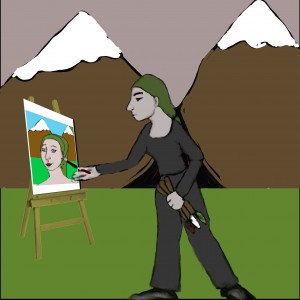A Secular Understanding of Dependent Origination: #11 Birth
 |
|
On one level, Sariputta’s description of birth is, like the preceding links’ details, telling us about the field in which what happens in this step grows: because we are born (because we exist at all) who we are — or at least who we think we are — can become apparent in the world. But the field for this step is actually the birth of our sense of self. In that sense, the “birth” is of an identity/self-concept coming into visible appearance — and what makes our individual self concepts visible in the world is our actions.
Actions, in the Buddha’s lessons about what really matters, are in “body, speech, and mind”. It may seem a little odd to us to have “mind actions” but it’s not only what we do or say, but what we choose not to do or say, as well, that counts. When we choose to refrain from doing or saying something, that “action” takes place only in our minds and so, obviously, is not something we see or hear — but it still makes a difference. Our beliefs about who we are, driven by all the earliest steps, formed through our experiences in the world — good, bad, indifferent — touching on whatever seems like us, unlike us, or neither, developing into certainty, taking shape in our beliefs about ourselves and where we are headed, are given visible form in the world by the things we do that are based on those experiences and beliefs.
Our “being” takes birth in whatever world (worldview) we have developed over time, begins showing (manifesting) beliefs about what our selves are composed of (i.e., the aggregates), and actively uses the senses to feed that sense of self (“obtaining the bases for contact”). We have become who we thought we should be, and we act like it.
In a sense, this “birth” closes the loop of sankhara by fulfilling that initial desire for creation.
And where does this lead? See the next post.
NOTES:
(1) As noted elsewhere (i.e. on my own blog) I have serious doubts about our modern translations of the definition of “birth” in descriptions of dependent arising. The phrase [in a womb] does not appear in the Pali but is, apparently, inserted here by Bhikkhu Bodhi to clarify what he feels is being said, but I suspect there are more problems with the translation than just that. Open-minded students of Pali are invited to have a look at my blog post and see if they see what I see, at all, and if they can improve on the translation.
(2) A more thorough explanation of the meaning of “birth” in dependent origination is to be found in my paper “Burning Yourself”. The thesis is given, at length (and in fairly plain English) in Volume Two (the April 2012 edition) of the Journal of the Oxford Centre for Buddhist Studies.
Table of Contents for A Secular Understanding of Dependent Arising
